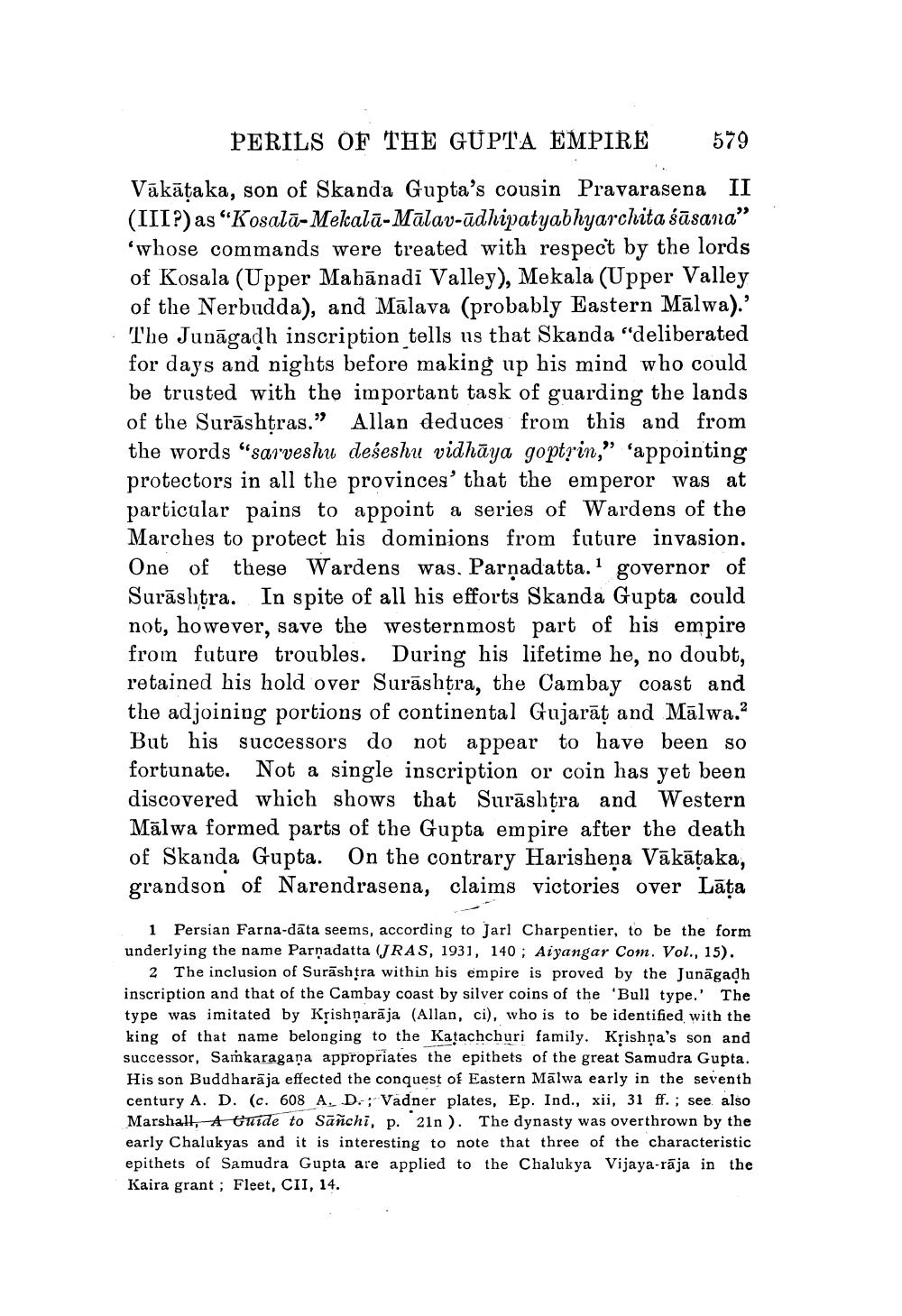________________
PERILS OF THE GUPTA EMPIRE
579
Vākāṭaka, son of Skanda Gupta's cousin Pravarasena II (III?) as "Kosala-Mekala-Mālav-adhipatyabhyarchita sasana" 'whose commands were treated with respect by the lords of Kosala (Upper Mahanadi Valley), Mekala (Upper Valley of the Nerbudda), and Malava (probably Eastern Malwa).' The Junagadh inscription tells us that Skanda "deliberated for days and nights before making up his mind who could be trusted with the important task of guarding the lands of the Surashtras." Allan deduces from this and from the words "sarveshu deseshu vidhaya goptrin," "appointing protectors in all the provinces' that the emperor was at particular pains to appoint a series of Wardens of the Marches to protect his dominions from future invasion. One of these Wardens was. Parṇadatta.1 governor of Surashtra. In spite of all his efforts Skanda Gupta could not, however, save the westernmost part of his empire from future troubles. During his lifetime he, no doubt, retained his hold over Surashtra, the Cambay coast and the adjoining portions of continental Gujarat and Malwa.2 But his successors do not appear to have been so fortunate. Not a single inscription or coin has yet been discovered which shows that Surashtra and Western Malwa formed parts of the Gupta empire after the death of Skanda Gupta. On the contrary Harisheņa Vākāṭaka, grandson of Narendrasena, claims victories over Laṭa
1 Persian Farna-data seems, according to Jarl Charpentier, to be the form underlying the name Parnadatta (JRAS, 1931, 140; Aiyangar Com. Vol., 15).
2 The inclusion of Surashtra within his empire is proved by the Junagadh inscription and that of the Cambay coast by silver coins of the 'Bull type.' The type was imitated by Krishnaraja (Allan, ci), who is to be identified with the king of that name belonging to the Katachchuri family. Krishna's son and successor, Samkaragana appropriates the epithets of the great Samudra Gupta. His son Buddharaja effected the conquest of Eastern Malwa early in the seventh century A. D. (c. 608 A. D.; Vadner plates, Ep. Ind., xii, 31 ff.; see also Marshall, A Guide to Sanchi, p. 21n). The dynasty was overthrown by the early Chalukyas and it is interesting to note that three of the characteristic epithets of Samudra Gupta are applied to the Chalukya Vijaya-raja in the Kaira grant; Fleet, CII, 14.




